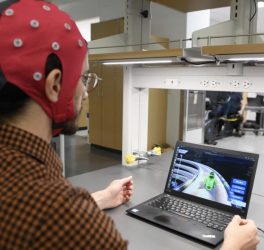
New Zealanders who are dear or have vison disabilities will be able to enjoy significantly more of their favourite TV programmes following a major funding boost to the organisation that provides captions and audio description.
NZ On Air is almost doubling the funding to Able – lifting its annual funding from $2.9m to $4.9m next year, thanks to a Budget 2020 funding boost to NZ On Air, for supporting vital public media platforms and services.
The funding injection will result in a phased scaling up of the service which will seeBreakfast on TVNZ 1 live captioned, a significant increase in the number of programmes with audio description on TVNZ 1 and 2, and plans to expand the services across more channels and platforms.
“This is a significant step forward for people with hearing and vision disabilities. They deserve to be able to enjoy and participate in local media more than they can currently, and the additional funding from Government over the next four years has made that possible,” said NZ On Air Chief Executive Cameron Harland.
In a year’s time up to 80% of content on TVNZ 1 and 2 will be captioned, and up to 30% of content on those channels will have audio description. Other channels’ take up of the extension of both services is dependent on some infrastructure investment, and will be confirmed at a later date.
Able Chief Executive Wendy Youens says, “This is a wonderful opportunity to increase media accessibility on New Zealand screens. We are excited to grow the levels of captioning and audio description and bring more content to those who rely on our services.”
Also benefiting from the Budget 2020 funding boost are the National Pacific Radio Trust which will expand its digital content for younger Pacific audiences, the 12 community access radio stations and their online hub, the five funded Student radio stations, which have taken a revenue hit due to Covid-19, and the Digital Media Trust which runs the NZ On Screen and AudioCulture sites.
NZ On Air was allocated an additional $6.25m per year for the next four years in Budget 2020 to support public media platforms and services that serve audiences not well-served by the mainstream.








